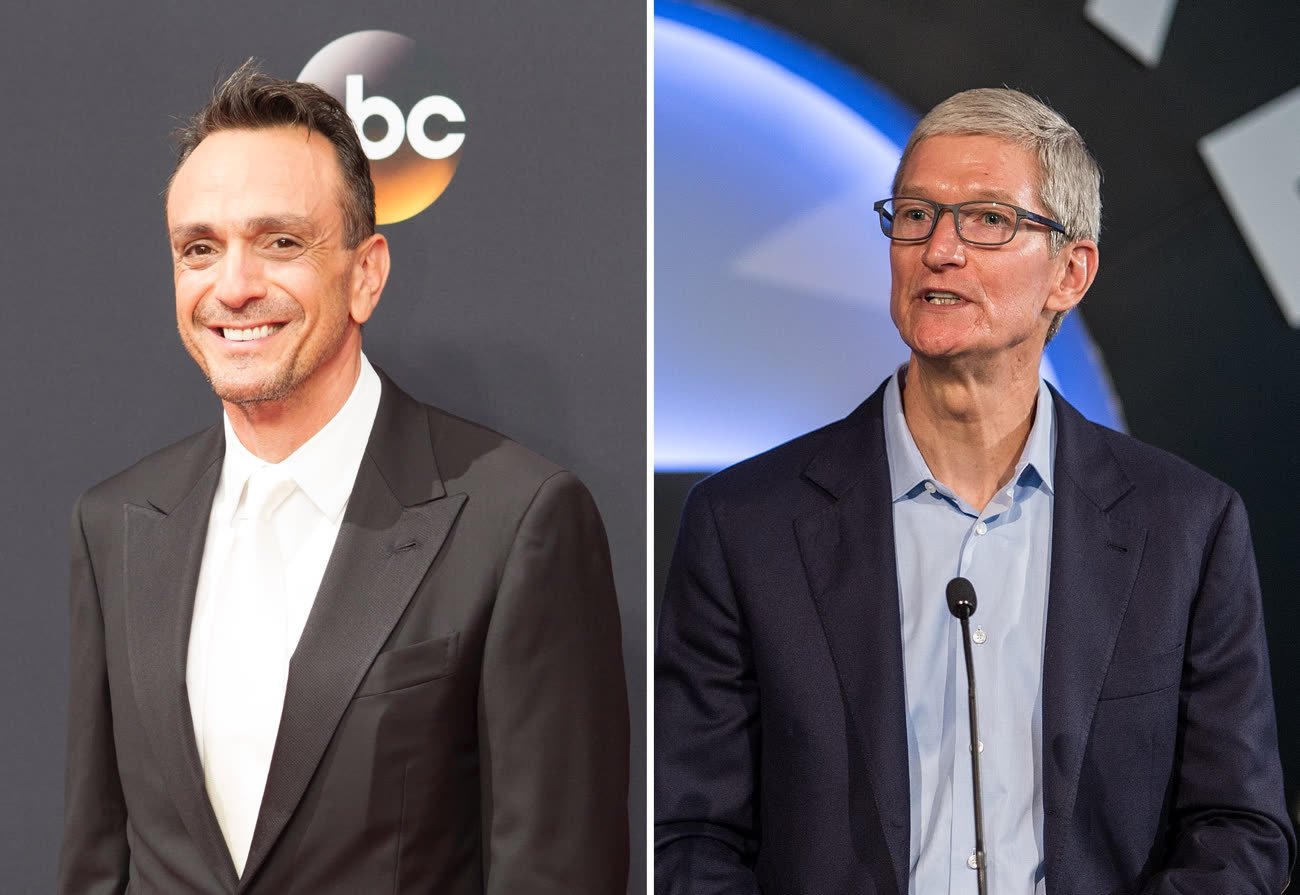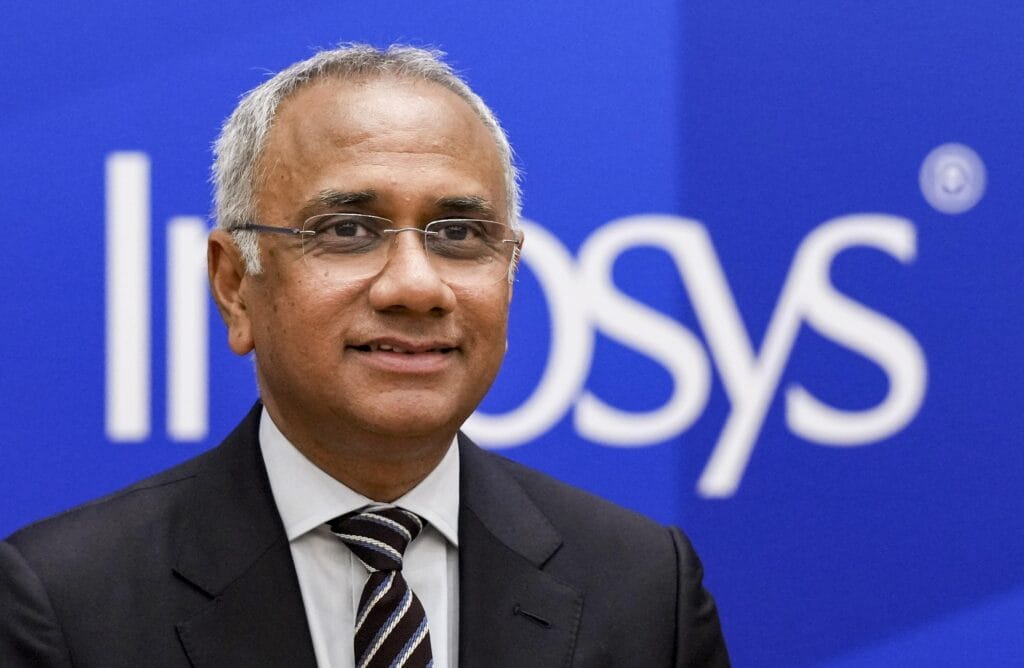Tim Cook, the successor of Steve Jobs at the helm of Apple, embodies continuity and innovation within the renowned technology company. His journey, marked by visionary leadership and a commitment to sustainability and equity, has helped shape the future of one of the most iconic companies in the world.
Table des matières
ToggleThe Beginning of Tim Cook’s Career

Tim Cook, born on November 1, 1960, in Alabama, is the CEO of Apple, one of the most influential companies in the world. Before becoming the figurehead of this tech giant, Cook embraced a remarkable career that paved his way to success.
At the end of the 1980s, after obtaining an MBA from Duke University, he joined IBM in the computer systems division, where he worked for 12 years. His role in optimizing production processes and reducing costs was acclaimed, earning him a reputation as an effective and innovative leader.
In 1998, Cook made a significant leap into the tech industry by joining Compaq as Vice President of Materials. However, his time there was short-lived as he was soon approached by Steve Jobs to join Apple.
At Apple, Tim Cook demonstrated his talent for supply chain management by transforming operations and increasing profit margins. Under his supervision, Apple developed one of the most efficient supply chains in the industry.
Cook’s significant achievements include:
- Implementing innovative manufacturing strategies.
- Simplifying production operations.
- Building strong partnerships with suppliers.
In August 2011, Cook was appointed CEO of Apple following Steve Jobs’ resignation. Since then, he has continued to drive the company to new heights while maintaining his predecessor’s relentless vision of innovation.
Academic Background
Tim Cook, the leader of one of the most influential companies in the world, began his career humbly yet determinedly. Before joining Apple, he worked at IBM, Compaq, and Intelligent Electronics, accumulating valuable experience in the field of technology manufacturing and distribution.
After graduating, Cook started at IBM, where he spent 12 years in various management roles focused on supply chain management and optimization. This experience allowed him to develop expertise that would prove crucial for his future at Apple.
His journey then led him to Intelligent Electronics as the Operations Director, followed by Compaq where he worked as Vice President in charge of Purchasing and Materials. It was here that he caught the attention of Steve Jobs, who convinced him to join Apple in 1998.
Before conquering the heights of the tech industry, Tim Cook already had a solid educational foundation. He earned a degree in industrial engineering from Auburn University, followed by an MBA from the renowned Fuqua School of Business at Duke University. This combination of engineering and management skills provided him with a broad and strategic vision essential for propelling him to high responsibilities at Apple.
Tim Cook also owes his success to his inclusive leadership and his ability to remain innovative while respecting Steve Jobs’ legacy. Under his leadership, Apple has continued to grow and diversify its product portfolio, including pioneering initiatives in the fields of health, artificial intelligence, and services.
Tim Cook’s journey is a brilliant example of how a well-planned career and quality education can open the doors to the highest realms of the tech world.
First Steps at Apple
Tim Cook began his professional career in technology after obtaining an MBA from the Fuqua School of Business at Duke University. Before joining Apple, he accumulated valuable experience at IBM, where he worked for 12 years. He then held management positions at Intelligent Electronics and Compaq, which allowed him to build a strong network and gain expertise in operations and supply chain management.
In 1998, as Steve Jobs had taken the reins of Apple, the company was undergoing a major restructuring. Jobs, eager to revitalize the company, sought to strengthen its executive team. It was then that Tim Cook joined Apple as Senior Vice President of Worldwide Operations. This decision proved crucial for the company’s future.
Tim Cook’s early steps at Apple were marked by a radical restructuring of the company’s operations. He notably:
- Optimized production lines by closing several factories and outsourcing manufacturing.
- Reduced inventory levels, significantly decreasing costs.
- Negotiated long-term contracts with suppliers to secure supplies.
His methodical and strategic approach quickly paid off, and Apple began to show impressive financial results. Thanks to his hard work and clear vision, Tim Cook contributed to propelling Apple to the top of the tech industry.
- Education: Tim Cook earned a degree in industrial engineering from Auburn University and an MBA from Duke University.
- Professional Background: He worked at IBM, Compaq, and Intelligent Electronics before joining Apple in 1998 as Senior Vice President of Worldwide Operations. In 2011, he succeeded Steve Jobs as CEO of Apple.
- Management Strategy: Tim Cook focused his management on innovation, international expansion, and corporate social responsibility, particularly in environmental matters and human rights.
The Ascendance to CEO

Tim Cook, successor to Steve Jobs, has transformed Apple while maintaining its spirit of innovation. Before assuming this prestigious role, he exhibited an impressive career that deserves to be explored.
Tim Cook joined Apple in 1998, bringing with him a solid experience gained at IBM and Compaq. He was initially hired as Senior Vice President of Worldwide Operations, a key position where he played a crucial role in restructuring Apple’s supply chain. With his effective logistical strategies, the company was able to reduce costs and increase profit margins.
In 2007, Tim Cook was named Chief Operating Officer, a position that entrusted him with even more responsibilities. He oversaw all global sales and operations, as well as service and support activities, while continuing to manage the supply chain. Under his leadership, Apple doubled its annual revenue and strengthened its presence in international markets.
This exemplary journey prepared Tim Cook to take the reins of Apple in 2011, after Steve Jobs resigned due to health issues. His rise within the company can be closely linked to his exceptional management skills, strategic vision, and ability to maintain financial sustainability while innovating.
Under Tim Cook’s leadership, Apple launched numerous flagship products, including the Apple Watch and AirPods, and continued to dominate the market with the iPhone. Moreover, he emphasized ethical initiatives such as renewable energy and diversity within the company.
In summary, Tim Cook’s leadership reflects a combination of strong operational skills and unwavering commitment to innovation—values that have allowed Apple to thrive in an ever-evolving tech sector.
Role as COO
Tim Cook’s journey at Apple is a fascinating story of determination and innovation. Long before becoming CEO, Cook held the position of COO, where he played a crucial role in the company’s operational transformation.
Tim Cook joined Apple in 1998, at a time when the company was struggling to regain its dominant position in the tech industry. Through his exceptional skills in operations management and pragmatic approach, he quickly rose through the ranks. After Steve Jobs returned to Apple, Cook was recognized for his strategic vision and ability to optimize supply chains.
Cook’s rise was marked by several key milestones:
- 2000: Appointed Senior Vice President of Worldwide Operations.
- 2002: Promoted to Senior Vice President of Sales and Worldwide Operations.
- 2005: Became COO, a key role in the restructuring of Apple.
In 2011, after Steve Jobs stepped down for health reasons, Apple’s board of directors appointed Tim Cook as the new CEO, confident in his ability to lead the company to new heights.
As Chief Operating Officer, Tim Cook redefined Apple’s operations by streamlining processes and reducing costs. He emphasized vertical integration, allowing the company to better control its products and respond more quickly to market changes. Under his leadership, Apple also forged strategic partnerships with new suppliers, thus improving product quality and efficiency.
Here are some of the notable initiatives Tim Cook undertook as COO:
- Reorganized supply chains to improve efficiency.
- Implemented inventory management systems to respond quickly to demand.
- Focused on reducing costs without sacrificing product quality.
Tim Cook’s success as COO was a determining factor in his appointment as CEO. Through his vision and methodical approach, Cook prepared Apple to become one of the most influential companies on the planet.
Successor to Steve Jobs
Tim Cook, an iconic figure in the tech industry, became CEO of Apple in 2011. Under his leadership, Apple has continued to innovate and thrive, solidifying its place among the technology giants. Tim Cook’s professional trajectory is an inspiration, showcasing a gradual and methodical ascent to the top of one of the world’s most influential companies.
Hailing from Robertsdale, Alabama, Tim Cook began his career at IBM, where he gained valuable experience in supply chain management. After a stint at Compaq, he joined Apple in 1998 as Senior Vice President of Worldwide Operations. His ability to optimize processes and reduce costs quickly caught Steve Jobs’ attention.
Within Apple, Cook was entrusted with several key responsibilities, including production management and international sales. His rigor and attention to detail allowed Apple to successfully navigate through many logistical challenges.
When Steve Jobs took a leave of absence for health reasons, Apple’s leadership naturally looked towards Tim Cook to take the interim. In August 2011, after Jobs’ definitive departure, Cook officially took the reins as CEO. This transition, while marked by deep sadness, went smoothly thanks to the solid succession planning established by Jobs.
Under Cook’s leadership, Apple continued to launch revolutionary products like the Apple Watch, AirPods, and innovative services such as Apple Music and Apple TV+. Tim Cook’s ability to maintain Apple’s innovative status while introducing sustainability and corporate social responsibility practices has strengthened the brand in new areas.
Ultimately, Tim Cook’s journey at Apple illustrates the power of a clear strategic vision combined with an unwavering commitment to operational excellence.
Tim Cook’s Strategies at the Helm of Apple
I pray for President Trump’s rapid recovery. My thoughts are with him, the other victims and the Trump family. I strongly condemn this violence.
— Tim Cook (@tim_cook) July 14, 2024
Tim Cook, the CEO of Apple since 2011, has managed to maintain and even expand the legacy of the technology company founded by Steve Jobs. Under his leadership, Apple has not only solidified its market position in smartphones and computers but has also explored new economic and technological horizons.
Tim Cook’s strategies at the helm of Apple are characterized by his methodical and operationally-focused approach. He has implemented ultra-optimized supply chains, reducing costs and improving production. His effective management skills have allowed Apple to achieve unmatched profitability levels.
One of Cook’s major strategic decisions was to broaden Apple’s product range. In addition to iPhones and MacBooks, Apple introduced new products such as the Apple Watch, AirPods, and HomePod, capturing an even larger market share. This diversification has allowed the company to avoid relying solely on its flagship products and continue to innovate across different sectors.
Tim Cook has also emphasized services. The App Store, Apple Music, iCloud, and Apple TV+ have become significant revenue sources, contributing substantially to the company’s revenue. This shift to a service-based business model has provided financial stability and sustained growth, independent of hardware sales.
In terms of ethics and social responsibility, Cook has pushed Apple to adopt more environmentally friendly practices. The company has invested in renewable energy to power its facilities and has committed to a rigorous recycling process for its products.
- Optimization of the supply chain
- Diversification of the product range
- Emphasis on services
- Commitment to the environment
Ultimately, the strategies put in place by Tim Cook have not only allowed Apple to maintain its leadership position in the tech industry but have also empowered it to continue to innovate and grow sustainably and responsibly.
Focus on Sustainability
Tim Cook, the current CEO of Apple, joined the company in 1998 as Vice President of Worldwide Material Management. He quickly rose through the ranks to become Apple’s Chief Operating Officer in 2007, and then CEO in 2011, succeeding Steve Jobs. Under his leadership, Apple achieved record sales figures and diversified its product portfolio by introducing innovations like the Apple Watch and AirPods.
Tim Cook’s leadership is distinguished by a focus on optimizing the supply chain and meticulous attention to operational details. Unlike his predecessor, Cook placed a particular emphasis on improving efficiency and reducing costs. One notable strategy has been the partial relocation of production to the United States while maintaining a substantial manufacturing base in China.
Another key strategy is the diversification of Apple’s revenue sources. Under Cook, Apple launched various services such as Apple Music, Apple TV+, and Apple Arcade. These services have significantly contributed to the company’s revenue, thereby strengthening its business model beyond just hardware sales.
Tim Cook has positioned Apple as a leader in sustainability and social responsibility. The company is committed to using 100% recycled and renewable materials in its products and packaging. Apple has also invested in renewable energy projects worldwide, aiming to make all its operations carbon neutral by 2030.
- Use of recycled and renewable materials
- Investment in renewable energy
- Commitment to carbon neutrality by 2030
Through his decisions and strategic orientations, Tim Cook continues to position Apple as a company that is not only innovative but also responsible, thus responding to the aspirations of modern investors and consumers.
Expansion of Apple Services
Tim Cook joined Apple in 1998 as Senior Vice President of Worldwide Operations. With a solid background in industrial engineering and an MBA from the Fuqua School of Business at Duke University, he quickly rose through the ranks of the company. In 2011, after the death of Steve Jobs, Cook took the reins as CEO, bringing a new strategic vision while respecting the legacy of his predecessor.
Cook implemented several strategies to propel Apple to new heights. Notably, he:
- Optimized the global supply chain, reducing costs while increasing efficiency.
- Expanded Apple’s presence in key international markets like China and India.
- Diversified the product portfolio, encouraging innovation in areas such as health with the Apple Watch and financial services with Apple Pay.
Under Cook’s leadership, Apple has expanded and refined its services offerings. Apple Music, Apple TV+, Apple Arcade, and Apple News+ are just a few examples of this diversification. These services provide consumers with a variety of content options and generate recurring revenue for the company.
The expansion of the services segment has allowed Apple to become less dependent on hardware sales, alleviating its reliance on the iPhone. This strategic diversification has proven to be a powerful growth lever, capitalizing on modern trends like streaming, gaming, and digital content consumption.
“`





